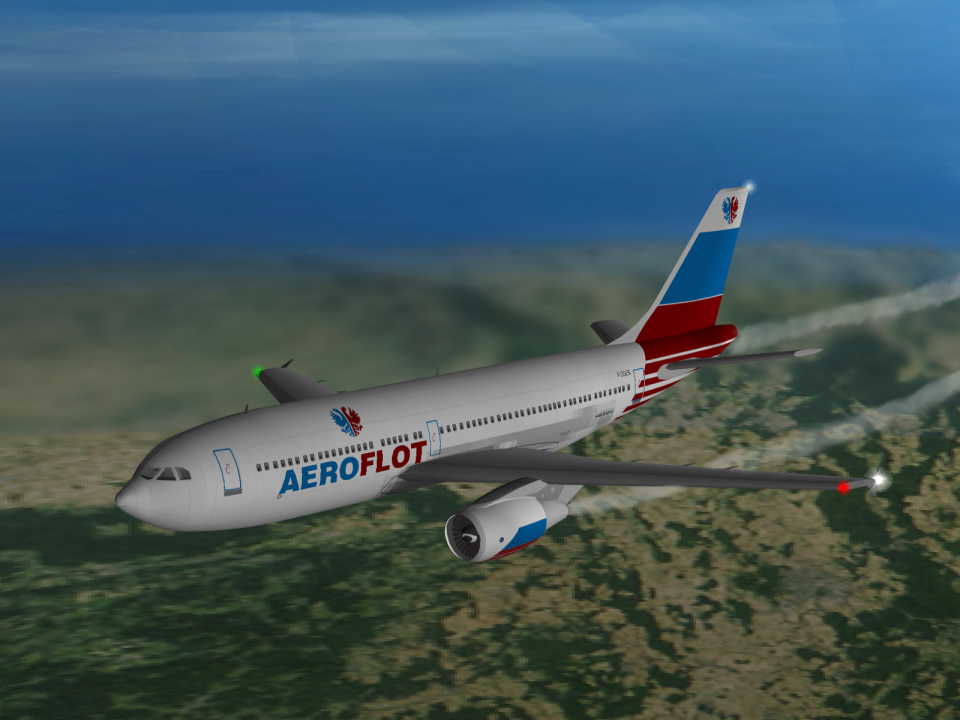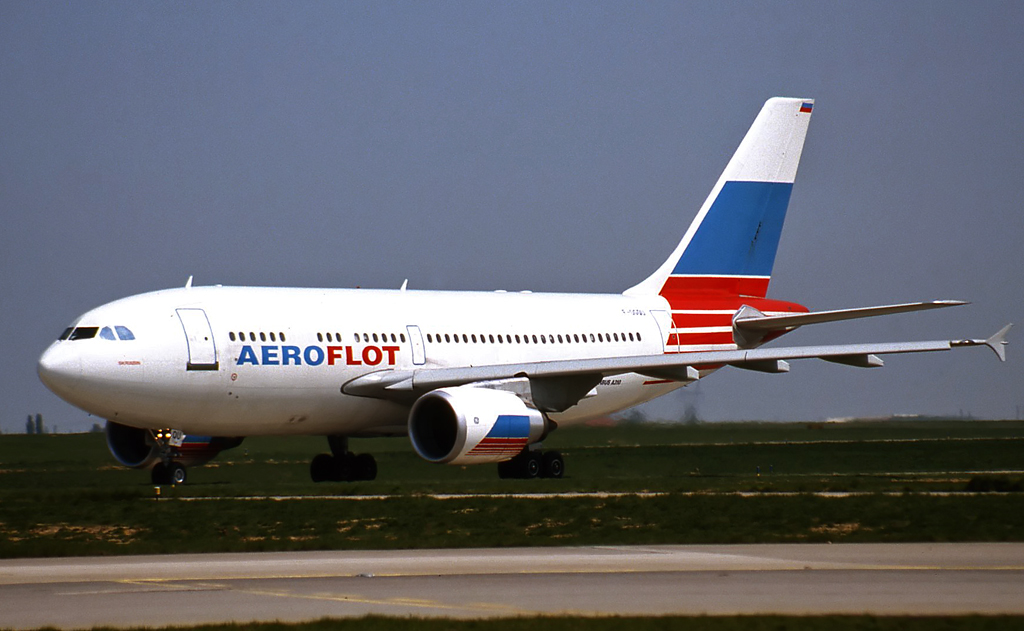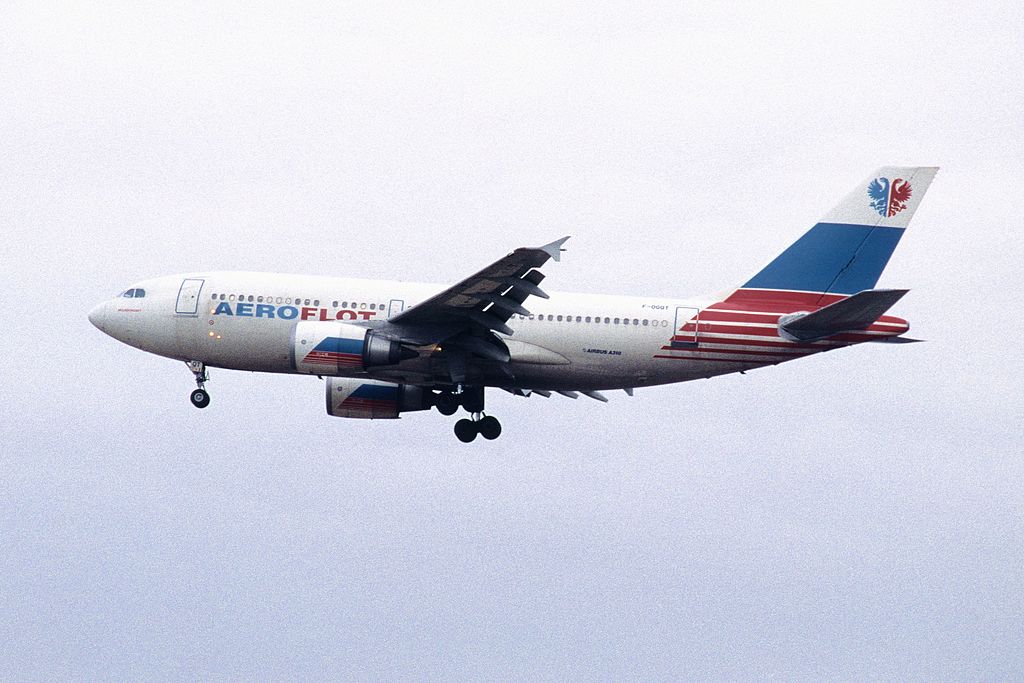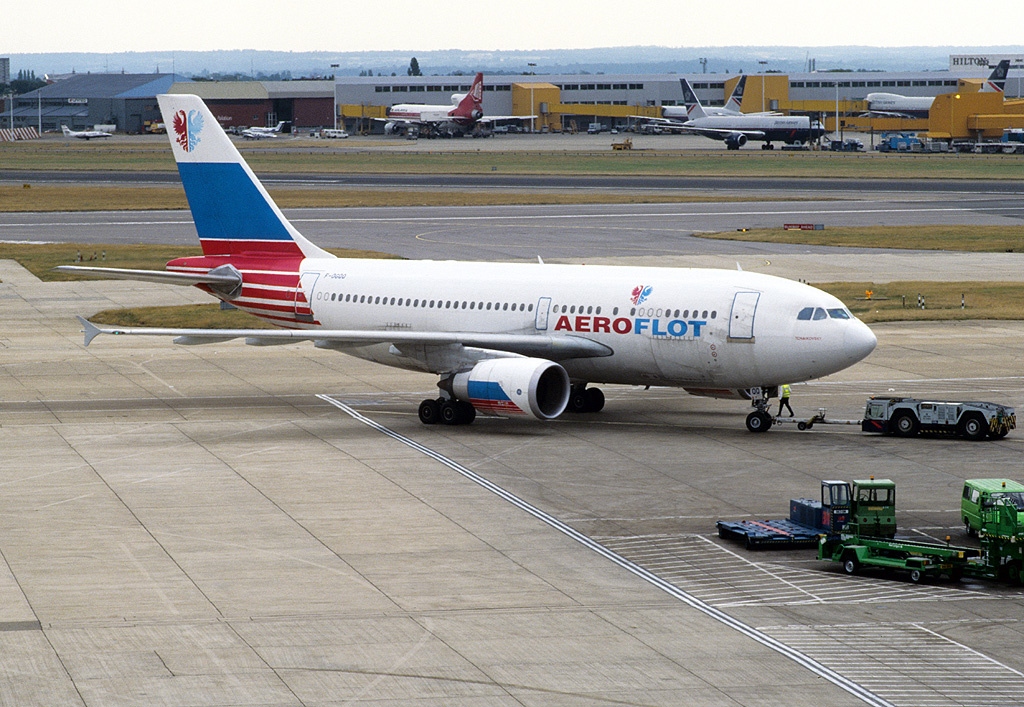30 Years Ago: How a child’s cockpit visit caused the loss of Aeroflot flight 593

On March 23, 1994, an Aeroflot Airbus A310 crashed in a remote mountainous region of southern Russia, killing all onboard. However, although the cause of the accident was a mystery when accident investigators began their work in the aftermath of the crash, the true horror of what unfolded on the flight deck that night soon became clear as the investigation progressed.
What follows is a harrowing story of how a seemingly innocent visit to the flight deck by a child resulted in the loss of 75 lives along with the destruction of the aircraft.
Background
On the night of March 22, 1994, Aeroflot Flight 593 was a scheduled passenger flight operating from Moscow’s Sheremetyevo Airport (SVO) bound for Hong Kong’s Kai Tak International Airport (HKG).
The flight was being flown that night by an Airbus A310-300 aircraft, operated by Aeroflot Russian International Airlines (ARIA), an autonomous division of the Russian national carrier Aeroflot to operate modern western aircraft routes between Russia and destinations in Southeast Asia and Europe. The aircraft, registered F-OGQS, had been delivered new to the airline on December 11, 1992, and was powered by a pair of General Electric CF6 turbofan engines.

The flight’s departure from Moscow at 16:39 local time was on time and uneventful, with passengers soon settling down for the nine-hour long night flight to Hong Kong – a city that all those onboard Flight 593 would never reach.
Crew details
On Flight 593 that night were a total of 75 people comprising 63 passengers and 12 crew. Of the 63 passengers flying to Hong Kong, 40 were Russian nationals (including 30 employees of Aeroflot) with the balance made up largely of business travelers from Hong Kong and Taiwan heading home after meetings in Russia.
Flight 593’s flight deck crew was made up of three pilots. The captain was Andrey Viktorovich Danilov (aged 40), who had flown for Aeroflot since November 1992 and had over 9,500 hours of flying experience in total, including 950 hours in the A310. Second in command was first officer Igor Vasilyevich Piskaryov (aged 33), who had flown for the airline since October 1993 and had 5,885 hours of flight time, including 440 hours in the A310.
The relief (or “cruise”) pilot that night was Captain Yaroslav Vladimirovich Kudrinsky aged 39. Kudrinksy, who was the most recent crew member to join the carrier, had been employed since November 1992 and had accrued over 8,940 flying hours, with 907 hours in the A310.
In addition to the three flight crew members, nine flight attendants were working in the cabin of Flight 593.
Flightdeck visitors
Shortly after midnight on March 23, 1994, with the flight cruising at 33,000ft (10,100m) relief captain Kudrinsky had taken over command of Flight 593, with Captain Danilov resting in the cabin. Kudrinsky invited his two children (who were flying with him to Hong Kong as passengers) to join him on the flight deck of the A310. At this point, there were five people in the flight deck made up of Kudrinksy, his two children (Son Eldar aged 15, and daughter Yana aged 13), first officer Piskaryov, plus a third off-duty Aeroflot pilot, Vladimir Makarov, who had escorted the children into the flight deck.
The two children of Captain Kudrinsky were on their first international trip with their father and were invited by him onto the flight deck to see his place of work. At this point, the aircraft was flying on autopilot as it cruised towards its destination in the dead of night, with most of the passengers sleeping.

Contrary to Aeroflot flying regulations, Kudrinsky let each of his two children sit in the left-hand seat of the aircraft in turn, facing the controls. At 00:43, Yana took her father’s seat first, with Kudrinksy manually adjusting the autopilot’s heading setting to create the impression that Yana was ‘flying’ the plane. After a few more minutes at 00:51, Yana vacated the seat for her older brother Eldar to face the controls. For reasons unknown, Pudrinsky allowed Eldar to manipulate the controls, presumably in the belief that the autopilot was flying the plane and that any control inputs from Eldar would have no effect.
At around 00:54, Eldar manipulated the control stick for over 30 seconds with inputs of up to 10 kilograms. These strong inputs contradicted those being made by the autopilot to keep the plane in straight and level flight. The result of these inputs was that the flight computer flying the A310 switched the aircraft’s ailerons (the flight control surfaces that control the bank angle of the aircraft) to ‘manual’ while maintaining its control of the other aspects of the aircraft’s flight profile.
Eldar was effectively in partial control of the aircraft at this point although no one on board realized it. As the autopilot attempted to return the aircraft to its prescribed heading, it came into conflict with the inputs from the control wheel which had increased to 12 to 13 kg. This conflict had led to the disconnection of the autopilot servo from the aileron control linkage.
Although a non-audible warning light had illuminated on the cockpit display to warn the pilots of the partial disengagement of the autopilot, the pilots failed to notice the light. Both pilots had mostly only flown Russian-built aircraft during their careers before switching to the A310, hence were unfamiliar with the configuration of the type’s cockpit warning lights.

The horror unfolds
With the forceful control inputs from Eldar, the aircraft entered a bank to the right at a rate of 2.5 degrees per second. The bank angle eventually reached 45 degrees. At that point, the autopilot was no longer able to maintain altitude due to the high bank angle of the wings.
The A310 started to buffet which caught the attention of Captain Kudrinksy. He immediately ordered the co-pilot to take control while he attempted to get Eldar to vacate the left-hand seat so he could regain control of the aircraft. As the co-pilot’s seat was in the fully aft position (which is often the case when flights are on autopilot in the cruise) it took the co-pilot two to three seconds to adjust his seat to reach the controls. In the meantime, the bank angle had increased to an extreme 90 degrees.
The A310 was unable to turn at such a steep angle while maintaining altitude, and the plane started to descend rapidly. As it did so, the increased G-forces made regaining control of the aircraft extremely challenging for the crew. With command over the ailerons lost, the plane’s autopilot used other control inputs such as increasing engine thrust and pitching the nose up to correct the rapid descent. However, unable to recover the plane to a flyable attitude, the autopilot eventually disengaged completely, leaving those in the flight deck to recover the plane’s adverse attitude.
Unrecoverable spin
First Officer Piskaryov managed to recover the aircraft’s dive with the reduced G-forces allowing Kudrinsky to retake his seat. However, in his haste to recover from the dive, Piskaryov over-corrected with the controls sending the plane into a near vertical climb, which without autopilot correction, stalled the aircraft which subsequently entered a spin as a result.
Although the pattern of spin and recovery was repeated twice further, the aircraft lost a huge amount of altitude in the process, descending beneath the minimum safe altitude for the flight at that section of its route over mountainous terrain.
WARNING – The video below features content that some readers may find upsetting.
At 00:59, air traffic controllers in Novokuznetsk were preparing to receive a radio transmission from Flight 593 with its next scheduled position report. This call never came. Simultaneously, the aircraft’s image had disappeared from their radar screens, with frantic radio calls made to the flight going unanswered.
At 00:58, two minutes and six seconds after the drama unfolded, Flight 593 crashed in a flat attitude at high vertical speed, estimated to be around 70 m/s (160 mph/; 250 km/h). The location of the accident site was in the Kuznetsk Alatau Mountain range in the Kemerovo Oblast region of southern Russia, about 20km from the town of Mezhdurechensk. All 75 people onboard died as a result of the high-speed impact. The aircraft was completely destroyed.
Two hours later, a report reached the authorities that burning aircraft wreckage had been spotted on a remote mountainside some 13 miles (20 km) southeast of the town of Mezhdurechensk. A team of rescuers subsequently trekked to the crash site where they were met with a scene of devastation consisting of smoldering aircraft wreckage, scorched forest, and human remains.
Immediate aftermath
In the days following the loss of Flight 593, families of the passengers and crew visited the site to leave floral tributes to honor the dead. The aircraft’s two flight recorders were recovered two days after the crash.
Having originally denied reports that there had been children in the flight deck of the doomed aircraft at the time of the crash, Aeroflot was forced to quickly change their account of events involving Flight 593 when in September 1994, a Moscow-based newspaper published a leaked copy of the cockpit voice recorder transcript.
The international aviation community quickly formed a common view from the transcript that while the crew had fought bravely to recover the aircraft (almost managing to do so on more than one occasion), their attempts were hampered by the presence of children in the cockpit along with the flight crew’s unfamiliarity with the aircraft type and Western-built aircraft in general.
Investigation findings
The formal report of the loss of Flight 593 was published in April 1995 just over a year following the accident. The report concluded that the crash was caused by a stall, spin, and impact with high ground resulting from a combination of factors. These factors included the following:
1. The decision by the crew to allow an unqualified child to occupy his seat and intervene in the flying of the airplane.
2. Application by the unauthorized person (and subsequently the co-pilot) of control forces that interfered with the functioning of the autopilot, thus overriding the autopilot, and disconnecting it from the aileron control linkage.
3. The failure by the pilots to detect that the autopilot had become disconnected from the aileron control linkage promptly.
4. The captain is away from his position and distracted by a conversation with his daughter.
5. The unintended commencement of a slight further turn of the controls following disengagement of the autopilot causing a right roll to develop.

6. The crew’s failure to detect the excessive right bank angle which exceeded operating limits.
7. Delays by the crew in identifying that the aircraft had exceeded the maximum bank angle which could have provided the necessary time to make suitable corrections to the plane’s attitude to recover the dire situation that had developed.
8. Inappropriate and ineffective actions by the co-pilot, who failed to disconnect the autopilot and to push the control column forward when the buffeting occurred, causing the aircraft to stall and enter a flat spin which ended with the aircraft impacting the high terrain.
9. The unpreparedness of the crew to act in this situation because of a lack of appropriate drills in the training program and unfamiliarity with the aircraft type, its autopilot, and its flight control systems.
10. A temporary loss of spatial orientation in night conditions by the crew which hampered any recovery of the aircraft from its adverse flying attitude.
Summary
As with most aviation accidents, there was no singular cause that led to the loss of Aeroflot Fight 593. The accident was ultimately the tragic result of a combination of factors that, in isolation may not have resulted in the loss of the aircraft and all onboard, but when occurring in rapid succession, led to a situation that proved to be unrecoverable for the crew.
While the events that led to the loss of Flight 593 should have remained an innocent cockpit visit of curious and excited children visiting their father’s place of work, they ended with a tragedy of unimaginable consequences.

While cockpit access rules were tightened in the years following the loss of Flight 593, they were tightened further following tragic events in the US on September 11, 2001, where terrorists took control of several US domestic flights causing them to crash with the loss of all onboard. Additionally, we now see cockpit access protocols being complied with more stringently across the world and where safety remains paramount when operating any commercial aircraft.
These days, we live in an age where casual cockpit visits are all but a thing of the past, and stories of passengers being invited to visit the flight deck of commercial passenger airliners are confined to aviation folklore. Where such events were once a common occurrence, they are simply no longer allowed. However regretful that fact might be, the decision to ban such visits has ultimately negated any risk of any flight suffering the similar fate that befell Aeroflot Flight 593.
The post 30 Years Ago: How a child’s cockpit visit caused the loss of Aeroflot flight 593 appeared first on AeroTime.
On March 23, 1994, an Aeroflot Airbus A310 crashed in a remote mountainous region of southern Russia, killing…
The post 30 Years Ago: How a child’s cockpit visit caused the loss of Aeroflot flight 593 appeared first on AeroTime.




